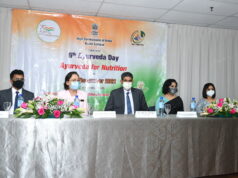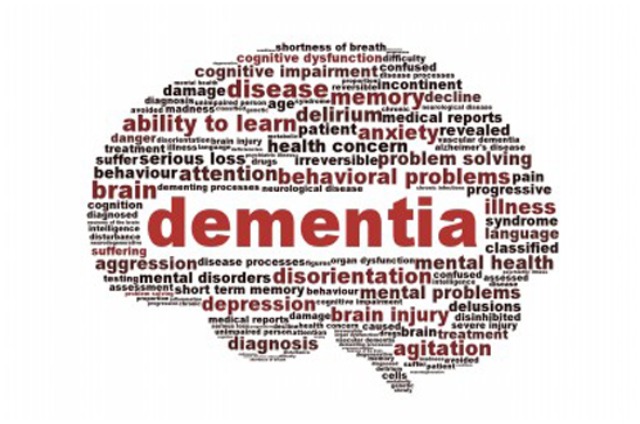 JUNE 1- The tobacco epidemic is one of the biggest public health threats the world has ever faced. Mass media campaigns, graphic warnings and alternative crop options for tobacco growers can help stop or reduce the estimated 800,000-900,000 tobacco-attributable deaths per year in India, experts say.
JUNE 1- The tobacco epidemic is one of the biggest public health threats the world has ever faced. Mass media campaigns, graphic warnings and alternative crop options for tobacco growers can help stop or reduce the estimated 800,000-900,000 tobacco-attributable deaths per year in India, experts say.
According to Global Adult Tobacco Survey (GATS) – India 2010, tobacco use is a major preventable cause of death and disease and is responsible 1 in 10 death among adults worldwide. Approximately 5.5 million people die around the world every year – with India accounting for nearly a fifth of this.
Shekhar Salkar, general secretary of National Organisation for Tobacco Eradication (NOTE)-India said: “Everyday, almost 2,500 people die in India due to consumption of tobacco and smoking. Many people even suffer from asthma and bronchitis, other than cancer and heart attacks.”
According to WHO findings, hard-hitting anti-tobacco advertisements and graphic pack warnings, especially those that include pictures, have reduced the number of children who begin smoking and increased the number of smokers who quit in many countries.
In India, the average age of starting tobacco use is before 15 years, according to the GATS – India 2010 report.
Bhavna Mukhopadhyay, executive director at Voluntary Health Association of India, said “glamorisation of smoking” impacts young people, but counter messages during smoking scenes in films help in discouraging people.
It is believed that if celebrities are shown smoking, it influences impressionable minds. To counter that, a new law mandating a disclaimer about the evils of tobacco use has to be flashed while showing smoking scenes in films or on television.
To make disclaimers more efffecitve, Salkar felt they need to be more creative and innovative.
“A brief interview of those who were addicted to tobacco or cigarettes should be shown instead of the same old images,” Salkar told IANS.
For instance, filmmakers can attach clippings of celebrities talking about the harmful effects of tobacco with their films, he added.
Different people have different reasons to smoke. There is a segment of young smokers who resort to cigarettes to de-stress themselves. For such smokers, medical aid is the best option.
“Some students like to smoke so that they can study all night, some do it due to failed relationships or bad results. Smoking is not the answer. They need to take medical help or exercise, do yoga and relax the mind,” Salkar said.
Food habits can also help to a certain extent in preventing smoking.
Annapurna Agrawal, nutritionist at Snap Fitness India, put it interestingly, saying the solution is “sitting in the refrigerator”. Drink milk or eat carrots before smoking, she advised.
Explaining why, she said: “When these are taken before smoking, a bitter taste develops, which can discourage people from smoking.”
Also, if fruits rich in Vitamin C like lemons, oranges and amla are consumed in large quantity, it reduces the urge to smoke, Agrawal added.
The other way to do it is by eating salty items like pickles and chips.
Mukhopadhyay felt that more than anything, it is about “self-determination” and “family support”.
Various kind of anti-tobacco campaigns, methods and schemes are underway, but Salkar thought the government needed to take better steps.
“The government needs to convince farmers to not grow tobacco. They should be given incentives for growing other crops. This should be done gradually otherwise there will be a rise in farmer suicides,” he said.
It seems that every government body is doing its bit.
Health & Family Welfare Minister Ghulam Nabi Azad has said that while the livelihoods of tobacco growers cannot be endangered, there is need to work toward moving farmers and farm workers out of the tobacco industry.
“We cannot indefinitely tolerate a public health hazard in the name of protecting livelihoods,” the minister said after releasing GATS – India 2010.
Later the Food Safety and Standards Authority of India (FSSAI), the apex body to ensure food quality in the country, under its Food Safety and Standards (Prohibition and Restrictions on Sales) Regulations, 2011 restricted the use of products that contain any substance that may be injurious to health.
Its immediate effect was when Madhya Pradesh banned gutka and pan masala. Kerala, Mizoram, Gujarat, Bihar, Rajasthan, Maharashtra, Haryana, Chhattisgarh, Jharkhand and Delhi soon followed and most recent to join the list is Tamil Nadu.
Another area that needs to be focused on is establishing more and more economical rehabilitation centers to help addicts. Right now, the rehab centres and medications are few and far between and expensive.










